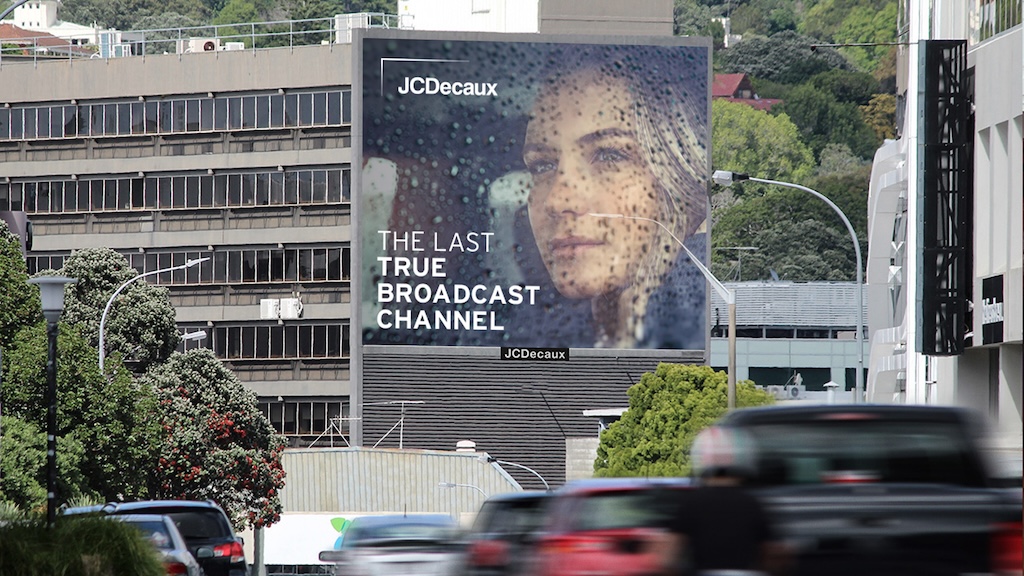Phil Eastwood: The Last True Broadcast Channel – Brands cannot afford to overlook the power of Out-of-Home in 2024 and beyond

By Phil Eastwood, General Manager, New Zealand, JCDecaux
In a landscape where most traditional media platforms are struggling to maintain their once unchallenged dominance, Out-of-Home is emerging as the resilient hero; the last true broadcast channel remaining amidst the ever-changing local media scene. It should be increasingly evident that Out-of-Home is not just an option; it’s a necessity for brands wanting to achieve mass reach with effective frequency in today’s fragmented media climate.
I returned to New Zealand in late 2023 to head up JCDecaux’s local business and I’m staggered to find that many media buyers in New Zealand don’t champion Out-of-Home as a reach and frequency medium, and a necessary inclusion in a multi-channel campaign.
Let me demonstrate why it’s time to reconsider, with compelling evidence, that Out-of-Home is not ‘a nice to have’, but a baseline inclusion for any campaign aiming to capture the hearts and minds of Kiwis.
Let’s address the elephant in the room, Television. Once the undisputed king of broadcast media, it is experiencing a steady decline in viewership on terrestrial channels. The glory days of achieving huge national reach with a single Sunday evening TVC across free-to-air channels are gone.
Terrestrial TV now struggles to reach even 50% of the population daily; it is well below this amongst the coveted under-40 demographic. Broadcasters’ digital platforms are not replacing their lost audiences. Advertisers see this changing picture and demand for television is declining and brands are seeking to replace the lost reach.
Warner Bros, Discovery’s recent decision to close Newshub, which was once a cornerstone of New Zealand broadcasting, serves as a stark reminder of this reality. Journalism, content and talent costs are increasing, at the same time as demand for television advertising is declining – it is an unsustainable model.
Traditional radio is not faring much better, offering only 39% daily reach. It is on a similar downward trajectory as terrestrial TV with younger audiences embracing pod-casts or digital radio, modern cars offering seamless smartphone integration and increased fragmentation from free-to-air options.

Contrast this to Out-of-Home. A medium that not only survives but thrives in the shifting digital landscape. Out-of-Home has the highest daily reach opportunity of any channel, capturing audiences during their daily routines. Post-pandemic work-from-home habits are lessening in New Zealand, faster than in other nations, and urbanisation is increasing. In my opinion, Out-of-Home is the only remaining one-to-many channel that is a viable and future-reach solution. The Out of Home Association of Aotearoa recently released its mobility study showing 80% of Kiwis aged 18+ are exposed to Out-of-Home every day; this figure would be even higher if including all Kiwis.
At JCDecaux, we understand the question is not which media but how they work together to achieve optimal effectiveness. Out-of-Home can absolutely be a standalone medium however, Analytics Partners research proves that the most effective channel combination in New Zealand includes Out-of-Home. The best ROI comes from TV, Digital and Out-of-Home combined. As the reach of television declines, the share of total investment directed to Out-of-Home should be calibrated to recognise the reach potential. Brands that fail to make this change or don’t include Out-of-Home will miss out.
Over and above reach, in an era where online video offers a one-to-one model, Out-of-Home delivers the impact and shared experience reminiscent of television’s heyday. JCDecaux Large Format, strategically placed along the 83% of journeys taken by car in New Zealand, ensures brands leave a lasting impression in consumers’ minds.
Furthermore, Out-of-Home has evolved from being data-poor to data-rich, allowing for more targeted and accountable campaigns. Programmatic trading has opened new avenues for advertisers to reach both mass and specific audiences with precision. Programmatic accounted for 7% of revenue at the end of 2023; this will grow exponentially in years to come.
Digital technologies not only enhance the targeting of campaigns, but they also offer greater agility in terms of timing and contextual relevance from data. Brands are looking to embrace technology to increase attention; technologies such as 3D, or full motion video can be used in pedestrian environments such as JCDecaux Airports.
In a time of increasing consideration of every advertising dollar spent, the Out-of-Home industry is well placed to validate this growing reach and provide full verification of what ads played, where and when.
In these uncertain times, one thing remains clear, media buyers cannot afford to overlook the power of Out-of-Home. As TV struggles and digital fragmentation continue, Out-of-Home, the oldest media channel in the world, is the beacon of stability and potential. It’s time for advertisers to rethink their strategies, and to embrace the bold and unmistakable opportunities that Out-of-Home offers.
